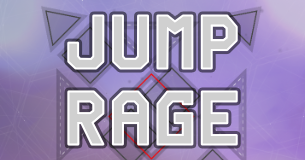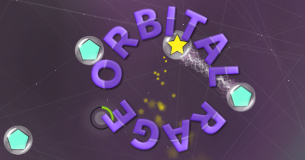
Spherical Games
Sheffield mobile game developer
9th September 2014
It’s taken a long time to get to this point, but I’ve just finished making my first indie game, Roll Rage. Time will tell if all the work has has been worth it, but I wanted to share some of my journey so far.
I’ve been working on Roll Rage for some time. Here are my top 10 reasons for why it’s taken so long. Some were unavoidable, others very much lessons learned.
- I worked for other companies on a freelance/contract basis in between working on Roll Rage.
-
I actually wrote about 18 games before deciding on a final 10.
You could say I wasted time creating the other eight games, which were effectively ‘experiments’ that didn't make the final cut. On the other hand, I’d probably have ended up with five bad games and five good ones if I hadn't taken this approach. Also, some of the game ideas you see in the final 10 were the result of ‘accidents’ from those experiments. I'll probably write a separate post that covers how they came about. One game that was scrapped was actually one of my favourites, but it involved a lot of data entry, which I wanted to avoid.
-
Most of the games went through a total rewrite.
Of the 10 games in Roll Rage, most were scrapped and reprogrammed to make them better. The artwork started out in a vector style, which meant most things were drawn using line points rather than sprites. I then changed it to a more doodle style, mainly because I was obsessed with calling the game ‘Doodle Roll’. Eventually, I settled on the style I have today. One of the biggest challenges was coming up with the artwork and making the game work around that. For example, in the Counteract game the gear contraption releases fruit and stars, which was not in the original prototype. I included the contraption to get players to move closer to the edge of the screen – where the danger lies. They are rewarded for taking a risk and that adds another level of interest to the game.
-
Feature creep.
I kept adding bits here and there then sometimes deleted them when they didn't work out. I use to have 180 leaderboards, which I ended up chopping down to 10. It took days to enter the data for those deleted 170 leaderboards, you can imagine the time I wasted! In the end, I scrapped them purely because less was more. Not having a deadline or any budget restraints didn't help. I was worried about people cloning the game and adding more features would make that more difficult for them to compete with a better product. However, I now feel that adding features to beat cloners is a total waste of time.
-
The game interface itself was a big job.
I’d say the interface took about the same amount of time as programming all 10 games combined. It took me a week just to get the gold, silver and bronze tier levels just right. There were roughly 90 sets of numbers to edit, and so I had to play all 90 game variations to see how well the game played. Once I got a score, I adjusted the numbers downwards because I had to factor in my skill level, which would be way above the average player. I did several passes to make sure the final numbers were realistic. I also programmed 50 help animations, which is another example of excessive, additional work.
-
I did not factor in the taller iPhone screens.
I did quite a bit of work making Roll Rage work properly on the tall iPhone screen. Because of the limited budget, I didn't get a new device until late into the project. The iOS simulator’s inability to tilt – the game’s primary input – is why I didn't deal with this issue sooner.
-
Developing a map editor.
At the start of the project, I actually programmed a map editor in HTML 5 and canvas, but I didn’t end up using it in Roll Rage at all. However, I did use it in one of the scrapped prototypes. Making the map editor wasn’t a total waste of time, as I still have plans to use it in future. That said, Roll Rage would have been finished four months ago if I’d not made it.
-
Working from home.
It takes me five seconds to get to work, but it is also takes just five seconds to leave. Basically, it’s too easy to get distracted and do something else. I’m much more disciplined now and better at focusing on getting work done. Ultimately, I prefer an office environment to separate work and personal time and the plan is to not have a computer at home at all. I did work on Roll Rage in a shared office for a while and my productivity soared. I only left because I was about to insert the game’s audio, which would have annoyed everyone else in the shared office.
-
Putting things off due to irrational fear of failure.
At one point, I felt I was deliberately slowing down because I didn't want the project to end. Crazy, huh? My thinking was: if I don’t finish, I'll never get to see if the whole project ends up failing. At my lowest, I probably did a couple of days work during December 2013 and only wised up at the end of January 2014. On the subject of putting things off, I used to delay complicated tasks until the last moment, because I was afraid that they might be beyond my capability. Thankfully, I've grown out this way of thinking and I never felt that fear during this project, despite learning a lot of complicated stuff.
-
Addiction.
I must admit, I often got carried away playing the same Roll Rage game over and over again to try and beat my own score, which meant I got nothing else done. You could call it testing, I suppose. I’m having to resist the urge to pick up the iPad as I type this!
-
Social networking.
Did I say this was a top 10? Sorry, I couldn't let this one go. Social networking – what a complete waste of time. Actually, I did extremely well to avoid social networks while I was working on this project. In fact, I just wanted to use the opportunity here to say, again, social networking – what a complete waste of time.
When I did those jobs, the work on the game was put on hold. I never worked in the evenings to catch up, so I always had to spend time getting back into the project. There was nothing I could do about resolving the issue, as I needed the income to support the indie side of the business.
What did I learn from all this?
All projects have their challenges, but the trick is to make sure that you learn from them and find ways to work better next time. Here is a short list of what I’ve learnt from creating and developing Roll Rage.
- Don't do a large scale projects on your own.
- Get a professional to do the artwork.
- Avoid boring data entry if you can help it.
- Resist the urge of feature creep.
- You may not be sure about a game you've made, but remember that someone out there will love it.
- Make a bare minimal game but still focus on playability.
- Release your game, see how well it is received and if the feedback is good, build on it.
- Come up with a memorable name for your app, but don’t build the game around it.
- Forget about cloners.













